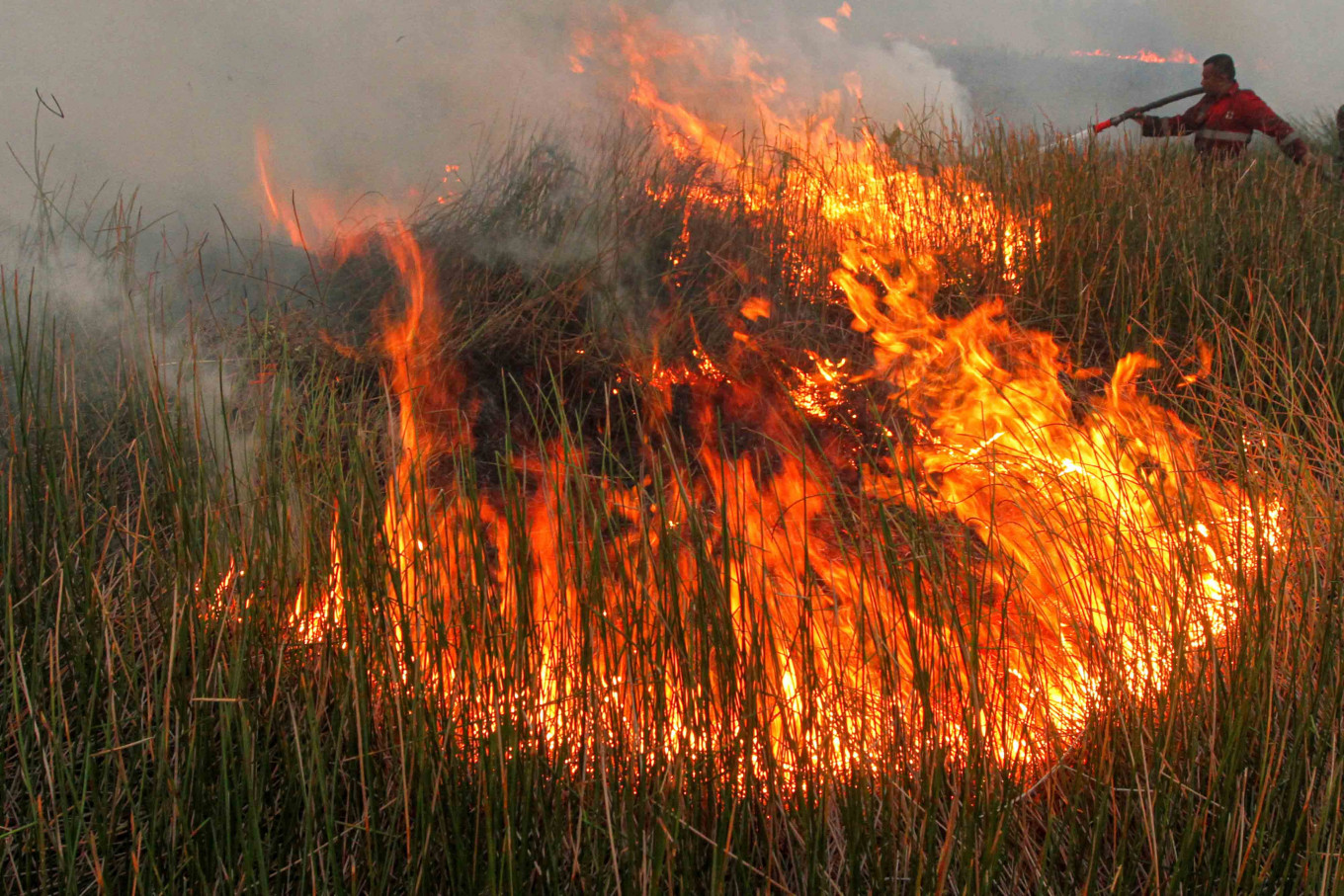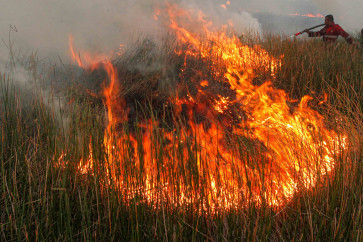Popular Reads
Top Results
Can't find what you're looking for?
View all search resultsPopular Reads
Top Results
Can't find what you're looking for?
View all search resultsPeatland fires: Preventive action should be priority
Many forest fires are triggered by land clearance using the slash-and-burn technique -- a practice farmers have inherited from their ancestors.
Change text size
Gift Premium Articles
to Anyone
Forty-year-old Theti Numan Agau recalled the time when her home in Mentangai Hilir village of Kapuas district in Central Kalimantan was engulfed in thick smoke from drained peatland fire in 2015.
"Many children had died because of the massive forest fire in 2015. They couldn't breathe properly because the thick smoke was suffocating," she said at a discussion in Jakarta on Wednesday.
The fire was partly triggered by land clearance using the slash-and-burn technique -- a practice that had, Theti explained, been passed down from her ancestors, whereby farmers set the land on fire as a cheap way to clear it for cultivation.
However, the massive forest fires of 2015 had persuaded her and other local residents to stop the slash-and-burn method. She added that the government had educated her and other villagers on how to turn peatland into economically productive land.
"Now, I can make Rp 60,000 (US$4.6) to 80,000 per day from growing vegetables on peatland. This time, we didn't burn [the land]," she added.
Theti’s story was shared as part of a Peatland Restoration Agency (BRG) program in anticipation of peatland fires in 2020. The agency in 2019 introduced a program called Desa Peduli Gambut (Peatlands-Caring Village) to educate people on preventing peatland fire.


















